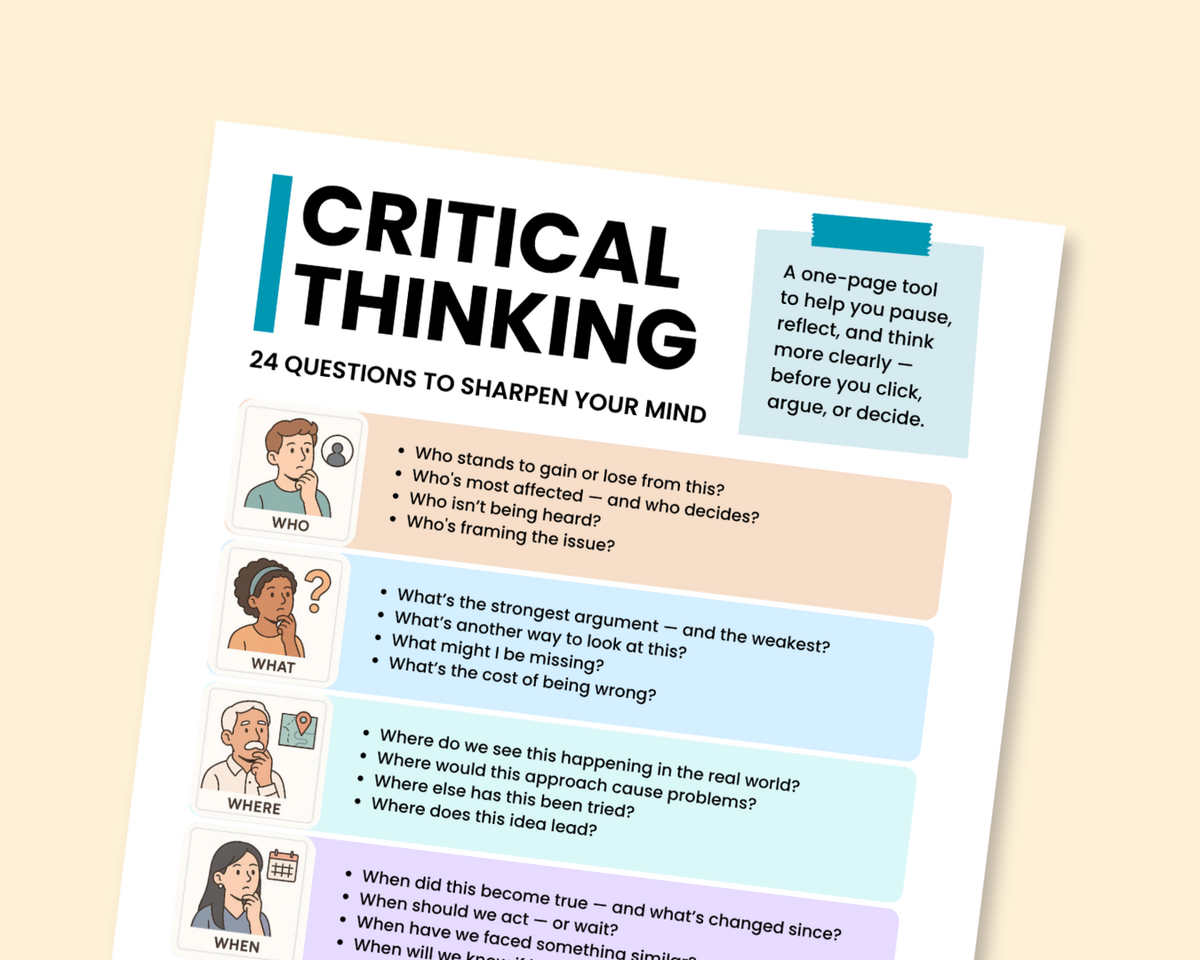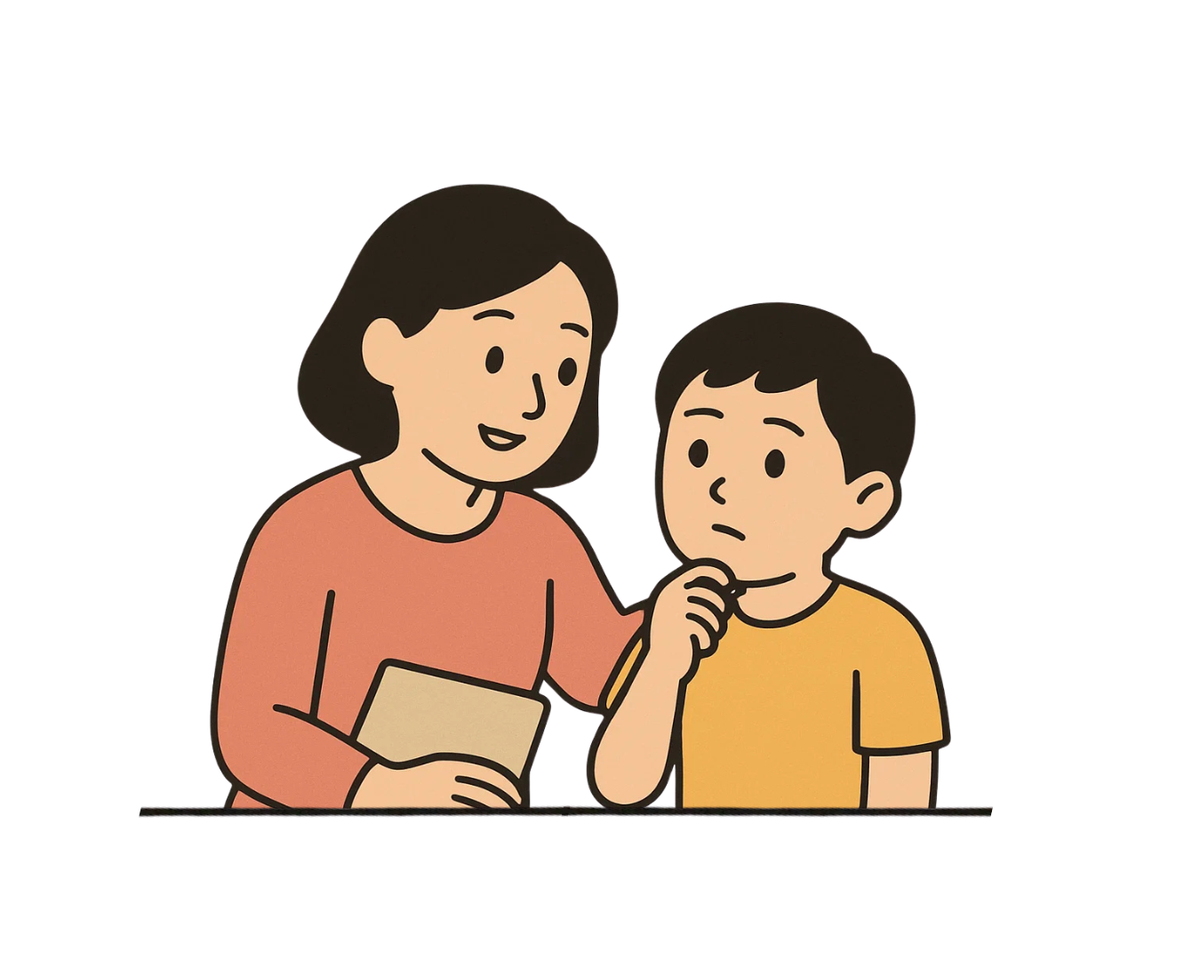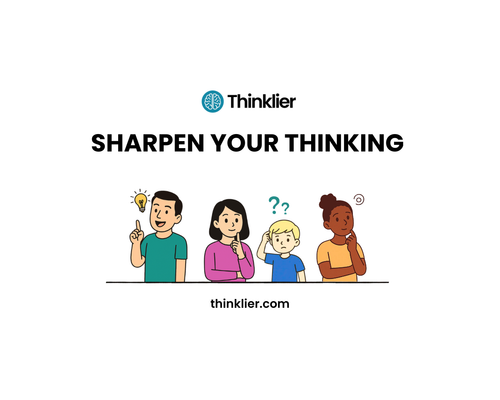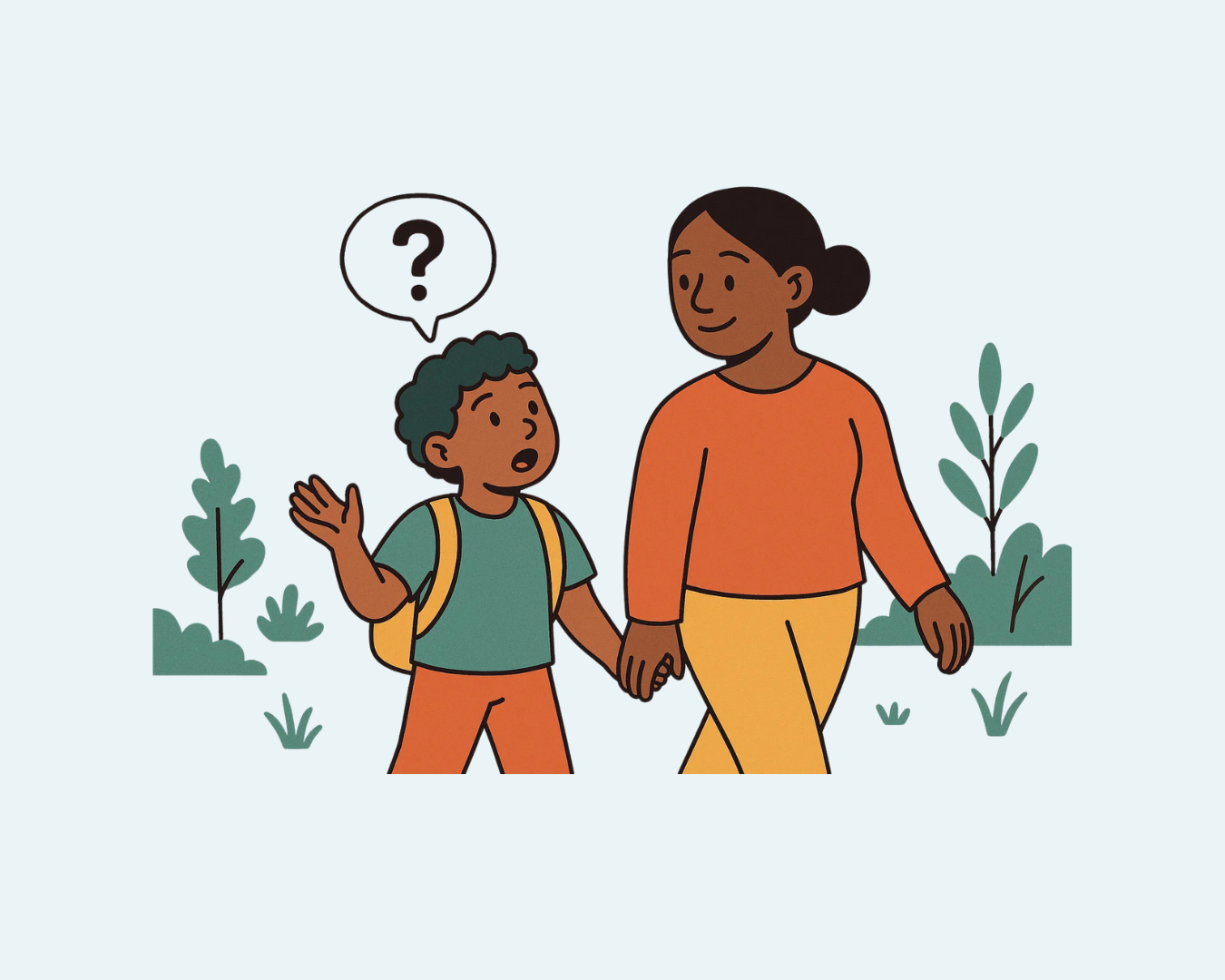Your child sees something wild on YouTube and says,
“Did you know the moon landing was fake?”
You blink. Then panic.
Should you shut it down?
Correct them?
Laugh?
Moments like this are opportunities. Not just to fact-check — but to teach one of the most powerful, overlooked skills a child can learn: critical thinking.
And no, it doesn’t require lectures. Or flashcards. Or turning your home into a logic bootcamp.
It starts with how you respond.
The truth about critical thinking
Critical thinking isn’t about winning arguments or spotting flaws in others. It’s about learning to pause, ask better questions, and decide what to believe on purpose.
Kids aren’t born knowing how to do that — but they are born curious. And if you nurture that curiosity with care, you’re halfway there.
In our Thinking Parent guide, we explore how small, everyday interactions shape how a child learns to reason — and how parents can model clarity without sounding like a TED Talk.
So, how do you actually teach it?
1. Ask more than you tell
Instead of jumping in with corrections, try:
“Hmm, interesting — where did you hear that?”
“What makes you think that might be true?”
“What else could explain it?”
This shifts the focus from what to think to how to think — which is the whole point.
2. Praise the process, not just the outcome
When your child changes their mind, say so. When they ask a thoughtful question, notice it.
“That was a smart pause.”
“You didn’t just guess — you thought it through.”
This builds identity: “I’m the kind of person who thinks before I believe.”
3. Talk out loud about your own thinking
Modelling matters.
Let them hear you say:
“I read that online, but I’m not sure. I want to check a second source.”
“Part of me wants to believe it — but maybe that’s just because it fits what I already think.”
Kids absorb how we talk about truth, doubt, and evidence — even when they’re not paying attention.
What if they believe something silly?
Sometimes, they will. That’s okay.
Don’t panic. Don’t mock. Don’t turn it into a showdown.
Instead, invite reflection:
“Can we explore that together?”
“What would count as good evidence?”
“How would we know if that idea was wrong?”
This keeps the door open — not just to this conversation, but to future ones.
And what about when you’re the one who’s wrong?
Admit it.
Seriously. Say, “I was wrong — and I’ve changed my mind.”
That moment is more powerful than any workbook. It shows that clear thinking matters more than being right — and that it’s safe to reconsider your views.
In our lesson on mental immune systems, we discuss how children need habits that help them resist misinformation and propaganda. But the first step is trust. And trust comes from seeing their grown-ups think honestly in real time.
In short
To teach a child to think critically:
- Ask curious questions
- Model thoughtful pauses
- Praise the effort to think, not just the “correct” answer
- Explore ideas together, even when they’re wild
- Be willing to change your mind in front of them
You don’t need to be a philosopher. Just someone who’s willing to say:
“Let’s think about it together.”
FAQ
Can young children really learn critical thinking?
Yes — in age-appropriate ways. When a child learns to ask, “How do I know that?” or, “Could there be another explanation?” — they’re already thinking critically.
What’s the most important thing a parent can do?
Model it. Let them see you thinking out loud, pausing before reacting, and showing that changing your mind isn’t weakness — it’s wisdom.
What if my child just doesn’t care about being ‘logical’?
That’s normal. Don’t aim to raise a mini-logician. Aim to raise someone who stays curious, asks honest questions, and resists easy answers.
Further reading
Nurtureshock by Po Bronson & Ashley Merryman
Packed with surprising research on how kids learn — and how adults often get it wrong.
Raising Critical Thinkers by Julie Bogart
A thoughtful, practical guide for helping kids ask good questions and think for themselves.
The Whole-Brain Child by Daniel J. Siegel & Tina Payne Bryson
How to support healthy reasoning by understanding how children’s brains develop.
Why Are You Still Sending Your Kids to School? by Blake Boles
A bold look at self-directed learning and raising intellectually independent kids.
How to Talk So Kids Will Listen & Listen So Kids Will Talk by Adele Faber & Elaine Mazlish
A classic on communication — essential for fostering curiosity and critical thinking.
Get the cheatsheet: 24 questions to help your child think clearly

Raising a child who thinks for themselves? Start here.
A free 10-part course to help you raise curious, independent thinkers — with calmer conversations, sharper questions, and habits that grow with your child.
The Thinking Parent is a practical, no-fluff guide for parents and educators who want to raise minds that think, not just follow. Each lesson includes a short explainer, a challenge to try, and a workbook page to apply it.

You might also like...








